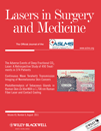The adverse events of deep fractional CO2: A retrospective study of 490 treatments in 374 patients†
Disclosures: Omar Shamsaldeen and Jennifer D. Peterson have no financial interests or disclosures. Mitchel P. Goldman is a consultant to Lumenis and medical director of Lumenis. All patients were treated at the Goldman Butterwick & Associates Cosmetic Laser Dermatology of La Jolla, CA, USA.
Abstract
Background
Fractionated carbon dioxide CO2 laser resurfacing unites the idea of fractional photothermolysis with an ablative 10,600-nm wavelength. This technology permits effective treatment of deeper rhytides, photodamaged skin, and scars, with shorter recovery and a decreased side effect profile as compared to traditional CO2 laser resurfacing.
Objectives
To study the rate of the adverse events associated with the use of deep fractional CO2 laser.
Methods
A retrospective study of 490 fractionated CO2 laser treatments in 374 patients by ten physicians within one practice was performed between March 3, 2008 and July 28, 2010. Treatment areas included the face, neck, chest, hands, back, and abdomen.
Results
Of the 490 treatments, 365 were of both superficial and deep fractional treatments while 125 treatments were deep. Patients treated were of Fitzpatrick skin types I–IV. Four hundred ninety treatments resulted in 67 adverse events (13.6%) in 63 patients (16.8%), the most frequent adverse events were acneiform eruption (5.3%), herpes simplex outbreak (2.2%), bacterial infections (1.8%), yeast infections (1.2%), hyperpigmentation (1.2%), prolonged erythema beyond 1 month (0.8%), and (0.8%) contact dermatitis. There were no reports of scarring or hypopigmentation.
Conclusions
Fractional deep CO2 laser is a safe method for treating rhytides, photodamaged skin, and scars with a low incidence of adverse events. Lasers Surg. Med. 43:453–456, 2011. © 2011 Wiley-Liss, Inc.




